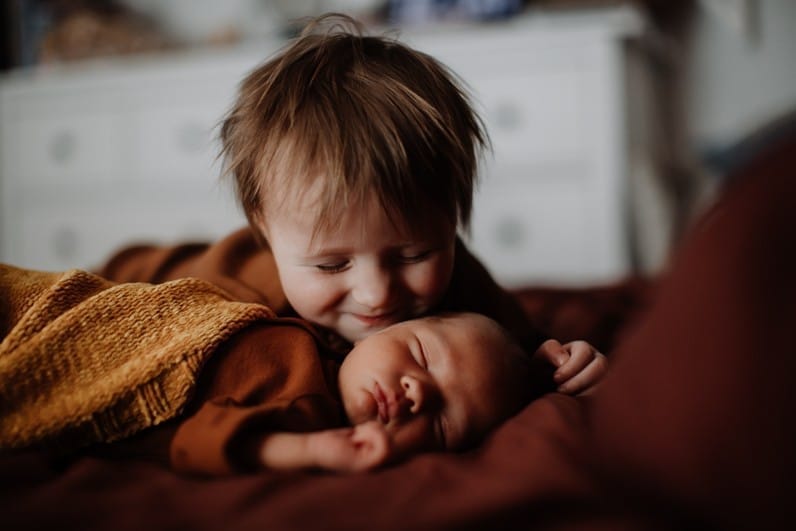When Little Teeth Sink In
When Little Teeth Sink In: Understanding and Responding to Biting in Young Children
Few things make a parent’s heart drop faster than hearing, “Your child bit someone today.” It’s one of those moments that triggers equal parts embarrassment, guilt, worry, and confusion. Most parents know that biting is common among toddlers but knowing that doesn’t always make it easier to handle - especially when it keeps happening.
Let’s go deeper than the surface-level “they’re teething” or “they want attention” explanations. Because biting isn’t just about misbehaviour, it’s communication. And often, what’s being said goes well beyond words.
1. Biting is Developmentally Typical — but Never Random
Yes, biting can be “normal,” but it’s not meaningless. Children bite for reasons — reasons that are often invisible to adults. At its core, biting is an action, not an attitude. A child who bites isn’t being “naughty” or “mean”; they’re expressing something they don’t yet have the skills to manage differently.
Some children bite when:
They feel overwhelmed or overstimulated and their nervous system is in “fight or flight” mode.
They’re experimenting with cause and effect (“What happens if…?”).
They experience a sudden rush of excitement, affection, or frustration they can’t yet regulate.
They’re seeking proprioceptive input — that deep sensory feedback from biting, chewing, or pushing — to calm their bodies.
Understanding which of these applies to your child is the real key. The same behaviour can have totally different roots in different children.
2. Think Nervous System, Not Just Behaviour
Biting is often a sign that a child’s nervous system has hit overload. Toddlers, especially those who are sensitive or have high sensory needs, may bite when they can’t organise their energy or emotions.
Ask yourself:
Does the biting tend to happen in noisy, chaotic environments (e.g. daycare transitions, playdates)?
Does it happen when your child is tired, hungry, or has had too much stimulation?
Does your child also chew on clothing, toys, or their own hands when they’re upset or excited?
If so, your child may need more support in regulating sensory input. Things like predictable routines, calmer transitions, chewable sensory tools, or quiet “recovery” time after big social situations can make a real difference.
3. Emotional Literacy: The Missing Skill
Many biting episodes stem from a simple gap: the child feels big feelings but doesn’t yet have words or strategies to express them safely.
We tend to overestimate emotional literacy (the ability to recognize, label, and regulate feelings) in toddlers and young preschoolers.
Instead of just saying “We don’t bite,” it’s more effective to teach what to do instead:
“You’re angry. You can stomp your feet or say, ‘Go away!’”
“You wanted that toy and felt cross. Let’s ask for a turn.”
“You’re excited! You can hug gently or clap.”
Biting fades faster when children gain tools, not when they’re simply told to stop.

4. Look Beneath the Pattern, Not Just at the Incident
If biting keeps happening, look for patterns.
Keep a short “biting diary” for a week: note when, where, and what was happening before and after.
You might spot clues like:
Always before snack or nap (hunger/tiredness)
Always during transitions (anxiety or lack of predictability)
Always with the same peer (territoriality, communication difficulty)
Patterns tell you where to intervene. Sometimes the solution is as simple as changing routines, adding more supervision at trigger times, or teaching specific play skills.
5. The Role of Relationship Safety
Children bite less when they feel emotionally safe. That doesn’t mean they never test limits. It means they recover from overwhelm more easily. When biting happens, our calm, steady response matters more than any “discipline.”
After a bite, the adult’s job is to:
Stay calm (yes, really because children borrow our nervous systems).
Separate children safely and attend to the hurt child first.
Acknowledge the biter’s feelings without excusing the action: “You were angry and you bit. Biting hurts. Let’s find another way.”
Reconnect later, when everyone’s calm. This repair builds safety and learning.
The more predictable and emotionally grounded your responses are, the quicker the biting will pass.
6. For Some Children, It’s About Control and Predictability
Some children bite because they’re navigating big changes, e.g. a new sibling, a new setting, or shifting routines, and biting gives them a brief sense of control in a world that feels unpredictable.
Predictability is profoundly regulating for young children.
Try to:
Keep routines consistent and narrate changes ahead of time.
Offer small, meaningful choices (“Do you want the red cup or the blue one?”).
Give attention to positive attempts at control — “You told me you wanted space, good job using your words.”

7. When to Seek Extra Support
Occasional biting in toddlers is typical. But if biting is frequent, intense, or continues beyond age 3–4, it can signal underlying sensory, emotional, or communication challenges. In those cases, it’s worth consulting an early childhood specialist, occupational therapist, or child psychologist for a fuller picture.
The Bottom Line
Biting isn’t a reflection of bad parenting or a “problem child.” It’s a symptom, a clue, about how a child is experiencing the world. When we look beyond the behaviour to the why, we discover opportunities to strengthen emotional regulation, communication, and connection.
As with most tricky stages in early development, this too will pass, and it passes faster when met with understanding instead of shame.
If you’re finding this stage especially challenging, or you’d like tailored guidance on supporting your child’s emotional development, I offer individual consultations for parents. Together, we can unpack what’s driving your child’s behaviour and create a practical, compassionate plan that works for your family.
You can learn more or book a session here.
Warmly
Vi
Want more?
Don't forget to join my Newsletter below :)
Remember, I am here to help you and your family in any way I can.
Enjoying the helpful content?
Let me know :)
Also let me know if there is any other topic that you would like me to cover.
The first step always begins with understanding what your little one needs.
Created with © systeme.io




